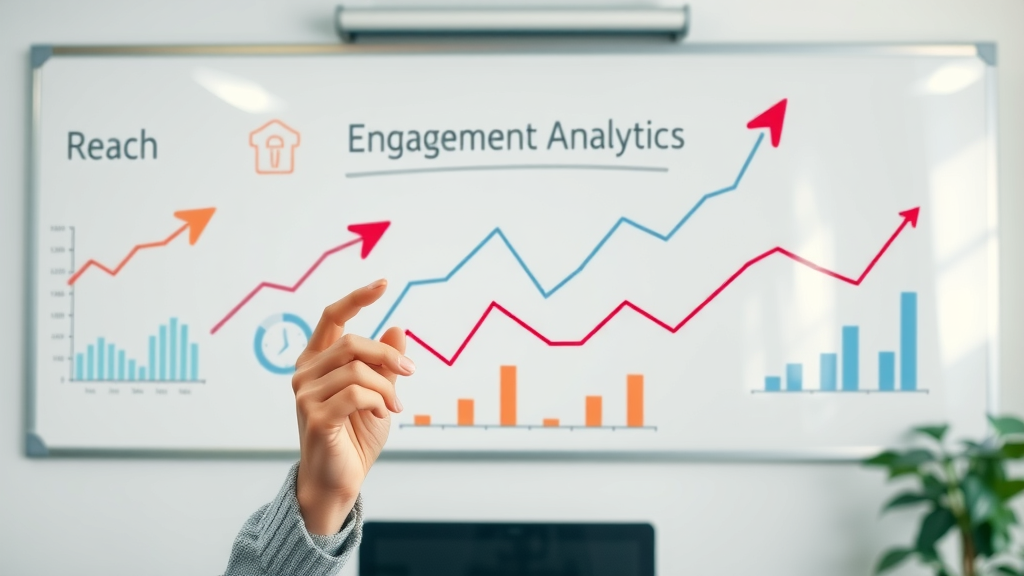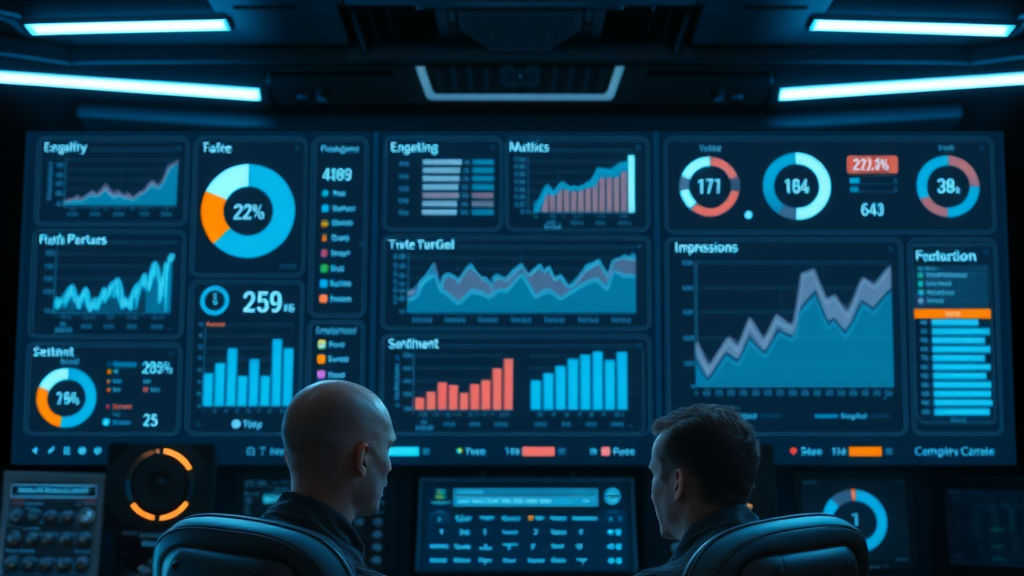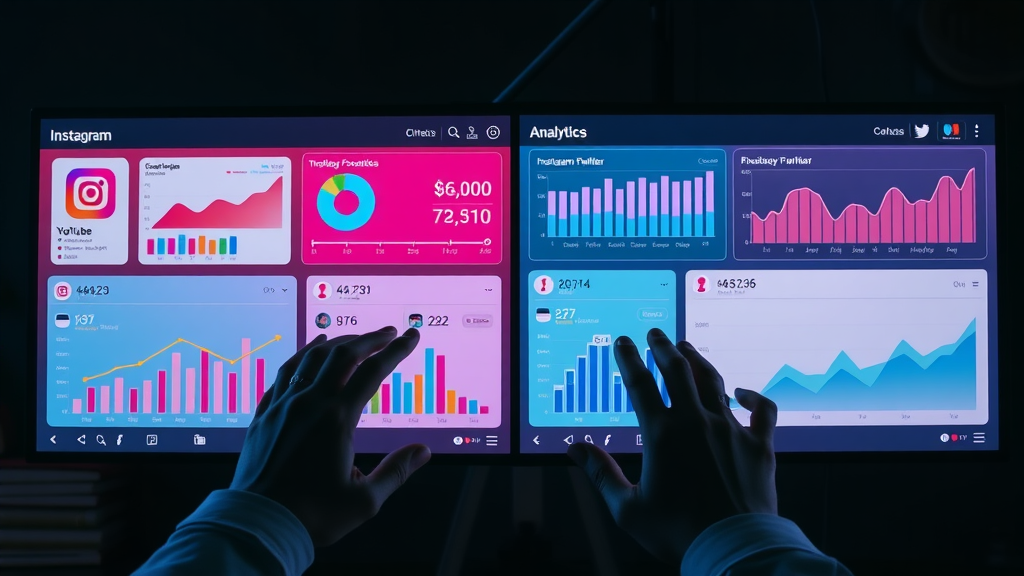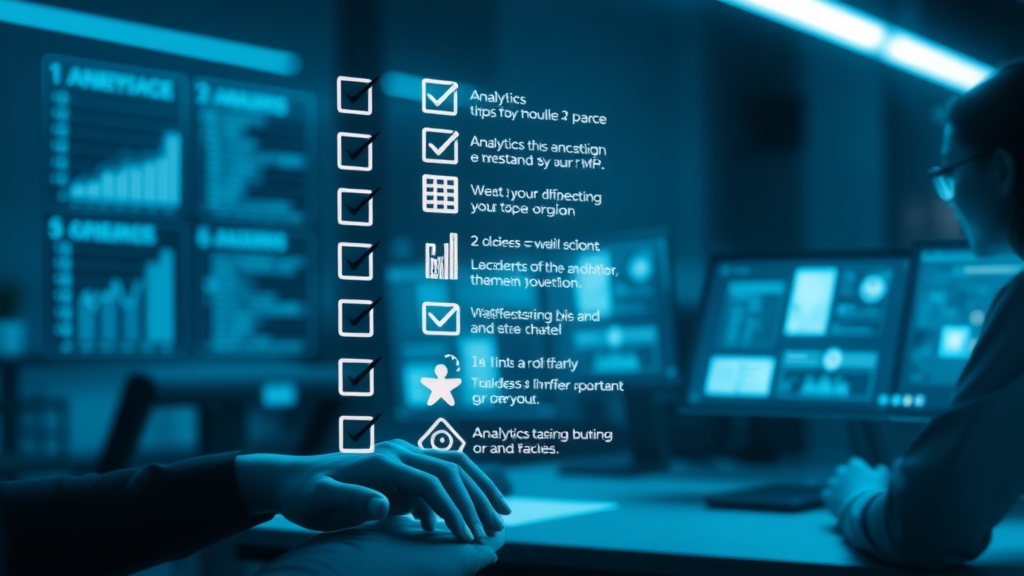Did you know over 90% of marketers say social media data influences their decision-making—yet only a fraction know which metrics actually drive business results? Beneath every viral trend and high-performing campaign lies a wealth of digital clues. But cutting through the noise to measure what really matters is where most brands stumble. In this guide, you’ll unlock social media analytics tricks that go beyond counting likes, turning raw data into actionable insights for sustained growth and real ROI.
Unlocking Social Media Analytics: Surprising Trends Behind Digital Success
Social media analytics have revolutionized the way businesses understand both their audiences and their performance in digital arenas. Today, it’s no longer sufficient to simply track followers or post frequency. Instead, brands that thrive are those who identify surprising trends within their social data, learning to leverage analytics tools to spot emerging conversations, monitor sentiment shifts, and anticipate market changes. Utilizing detailed media analytics, successful teams gain a deeper grasp of what content resonates, which times spark the most interaction, and how to adjust strategies on the fly. Take, for instance, a retail company launching a seasonal media campaign. Monitoring hashtag performance and spike periods isn’t just interesting—it’s mission-critical for maximizing conversions. Social media analytics empower teams to break objectives into micro-goals, track campaign progress in real time, and unearth powerful audience insights that can be fed back into creative decisions. The most impactful businesses don’t just measure data points; they ask the right questions and translate analytics results into business-altering actions.

Navigating Social Media Analytics: Core Concepts and Their Relevance
What Is Social Media Analytics and Why Does It Matter?
Social media analytics involves collecting, analyzing, and interpreting data from social media channels to understand and improve digital marketing performance. This process goes far beyond counting retweets or measuring how many fans you gain. It means examining data points such as engagement rate, audience growth, reach, impressions, and sentiment across each platform—ultimately allowing decision-makers to fine-tune campaigns or content to resonate with the target audience. The relevance of social media analytics is simple but powerful: you can’t optimize what you don’t measure. Brands equipped with sharp analytics tools spot trends early, mitigate public relations risks, and create highly personalized experiences. From a business perspective, this translates into higher ROI, lower customer churn, and a more loyal, engaged audience. Whether you're refining a small Instagram campaign or steering a cross-channel media marketing blitz, effective analytics underpin every digital success story.

Media Analytics Tools: The Backbone of Social Media Measurement
The ever-expanding landscape of media analytics tools powers marketers to monitor, analyze, and report on media data with unrivaled accuracy. Platforms such as Google Analytics, Sprout Social, and Hootsuite offer in-depth insights into media performance metrics—encompassing the reach of every post, the engagement rates for diverse content forms, and real-time monitoring of brand mentions and sentiment analysis. The right social media analytics tool brings clarity to otherwise overwhelming streams of social media data. Effective analytics tools not only aggregate statistics from various social media channels but also present information in intuitive, actionable dashboards. For digital marketers, this transforms previously daunting media reports into strategic playbooks for each new campaign. When variables shift—like a sudden viral trend or a dip in engagement—robust analytics tools are pivotal for pivoting strategies, benchmarking against competitors, and demonstrating marketing ROI to stakeholders.
| Analytics Tool | Core Features | Best For | Pricing Model |
|---|---|---|---|
| Sprout Social | Cross-channel reports, scheduling, sentiment analysis | Comprehensive social media analytics | Subscription (Monthly/Annual) |
| Hootsuite Insights | Real-time analytics, influencer identification, social listening | Large teams, agencies | Subscription (Monthly/Annual) |
| Google Analytics (with Social Reports) | Website traffic from social media, attribution modeling | Analyzing conversions, traffic sources | Free/Premium |
| Brandwatch | AI-powered sentiment analysis, audience segmentation | Enterprise-level reporting and social listening | Enterprise Pricing |
How to Apply Social Media Analytics: Tricks, Techniques, and Best Practices
Transforming social media analytics from an observational tool into an engine for growth requires a strategic blend of best practices, careful goal-setting, and creative reporting. The most effective brands build their media analytics strategy on a foundation of clear objectives, leveraging analytics tools to capture every critical data point. Instead of drowning in vanity metrics, they focus on media performance indicators such as conversion rates, share of voice, and audience sentiment to refine each campaign. Successful teams also prioritize real-time social listening for emerging trends and customer feedback, creating a feedback loop that directly influences creative content and customer service strategies. When it comes time to present findings, well-designed social media reports tell a story—connecting data analytics to real business outcomes, like increased brand visibility or improved customer loyalty. By combining these best practices, brands transform media analytics from a static report into a blueprint for digital dominance.
- Define clear social media goals using analytics
- Understand media performance metrics
- Incorporate sentiment analysis and social listening
- Create actionable social media reports
- Leverage advanced analytics tools for deeper insights

“You can’t improve what you don’t measure.”—Peter Drucker
Selecting the Right Social Media Analytics Tool for Your Brand
Choosing the right social media analytics tool is a vital first step in building an effective measurement strategy. With hundreds of analytics tools available, focus on those that integrate seamlessly with your media channels and capture the metrics most relevant to your objectives. Comprehensive media analytics tools, for example, offer not only basic follower reports but deep dives into audience sentiment, high-performing post formats, and even competitor benchmarking. Consider your media marketing workflow: do you need real-time alerts, detailed media reports, or advanced sentiment analysis? Prioritize features that will provide actionable insights rather than just data dumps. Finally, ensure the analytics tool you select offers exportable reporting and supports integration with other core software platforms, creating a single source of truth for all social media campaign analysis.
Crafting a Media Report: What Metrics Matter Most?
Building a powerful media report starts with identifying metrics that align with your business and marketing goals. While likes and shares offer a surface-level snapshot, true impact comes from tracking engagement rates, click-through rates, reach, sentiment, and conversion metrics tailored to your social media campaign objectives. A robust media report goes beyond the “what” to explain the “why,” connecting shifts in performance to specific content strategies or external events. Data analytics must be visualized effectively—think charts for engagement over time, comparisons of media platforms, or sentiment analysis breakdowns. Be thorough in your analysis but concise in your presentation, ensuring your report is both actionable and easily digestible for decision-makers. Revisit your media report regularly, using feedback to optimize not just content but also future reporting methods and benchmarking processes.

Integrating Social Listening and Sentiment Analysis
Incorporating social listening and sentiment analysis is crucial for grasping the nuances of your brand's digital footprint. Social listening involves monitoring conversations around your business, competitors, and market—spotting shifts in customer preferences, pain points, and brand advocates. When paired with sentiment analysis, which assesses positive, negative, or neutral tones in social media mentions, marketers gain a 360-degree view of real-time audience opinion. These tools not only identify emerging trends and potential crises but also provide insights for audience segmentation and content personalization. Used together, they bridge the gap between raw media data and the actionable insights needed for creative campaign development or agile crisis management. Ultimately, the fusion of social listening and sentiment analysis amplifies the power of your social media analytics strategy, ensuring you’re always one step ahead in the dynamic world of digital marketing.
Elevate Media Performance: Advanced Social Media Analytics Strategies
To take your social analytics to the next level, brands must weave advanced media analytics strategies into every campaign. This begins by defining clear business objectives and aligning each metric, from audience growth to share of voice, with those goals. Utilize analytics tools to uncover hard-to-spot performance factors, such as best posting times, micro-influencer impact, or content clusters driving conversions. Training your team to interpret these metrics and turn them into adaptive strategies is equally important. Use dashboards and comparative reports to highlight trends across diverse media platforms and media channels, translating analytics into actionable, iterative refinements. The most successful digital brands foster a culture that values data-driven creativity—testing, learning, and optimizing endlessly in pursuit of digital excellence.

From Social Analytics to Action: Turning Data into Results
It’s not enough to collect social media data—you have to turn that information into tangible results. The secret lies in understanding the story each data point tells. For instance, noticing a sudden drop in engagement could signal the need to alter content types or posting frequency, while a spike in positive sentiment after a campaign can inform future creative direction. Social analytics should empower your team to rapidly respond to both challenges and opportunities, closing the loop between data analytics and proactive media marketing. Identifying actionable insights within your analytics dashboards is the fastest way to demonstrate the ROI of social media marketing. Guide your next steps with clear “if this, then that” scenarios—if audience demographics shift, adapt messaging; if a hashtag outperforms, double down with related content. When analytics becomes the foundation for every decision, digital efforts move from guesswork to growth.
Customizing Your Media Analytics Tools for Niche Media Channels
Not all media analytics tools are created equal—especially when it comes to niche media channels. Instagram, YouTube, Twitter, Facebook, and LinkedIn each offer unique analytics dashboards with metrics tailored for their core audiences. To maximize media performance, it’s best practice to customize your analytics approach to the nuances of each platform, employing bespoke KPIs and report structures that reveal what’s working and what isn’t. For example, Instagram Insights gives detailed breakdowns on story engagement and brand awareness, while YouTube Analytics dives deep into watch time and audience retention. Twitter Analytics emphasizes real-time conversations and share of voice, and Facebook Analytics centers on demographic reach and ad performance. On LinkedIn, focus shifts to B2B audience characteristics and post engagement by industry. By tailoring your media analytics tool to platform specifics, you’ll pinpoint new opportunities and scale your media marketing more strategically.
- Instagram Insights for Brand Awareness
- YouTube Analytics for Video Performance
- Twitter Analytics for Real-Time Social Listening
- Facebook Analytics for Audience Demographics
- LinkedIn Analytics for B2B Media Marketing

Ensuring Data Integrity in Social Media Analytics
Accurate social media reporting starts and ends with data integrity. Erroneous, duplicated, or siloed data skews analytics and can misguide media marketing strategies. It’s critical to regularly audit your analytics tools, confirm data sources, and standardize reporting formats across media channels. Confirm metrics definitions are consistent—an “engagement” on Instagram, for example, might differ from engagement on Facebook. Encourage your team to validate data after each campaign, using trusted benchmarks and historical comparisons. Reliable data analytics empower brands to build credibility, demonstrate ROI, and confidently adapt to shifting trends. In a world where social media channels and algorithms constantly evolve, trustworthy data is the foundation of every winning media strategy.
Real-World Success: Social Media Analytics Case Studies
- Case Study: Social Media Data Shaping a Product Launch A leading lifestyle brand used cross-channel analytics tools to monitor conversations before and after introducing a new product line. By tracking engagement spikes, influencer mentions, and social network sentiment, they identified key launch windows, optimized creative assets, and exceeded expected sales targets.
- Case Study: Sentiment Analysis Driving Media Marketing Decisions A fintech startup leveraged media analytics tools to analyze sentiment around a new app feature. By focusing on customer feedback and social listening, negative sentiment flagged usability flaws, leading to an urgent update. Post-launch, positive sentiment increased 45%, driving higher retention and app referral rates.
- Case Study: Measuring ROI Across Multiple Social Media Channels A global non-profit optimized its fundraising efforts using robust analytics tools, comparing performance across Facebook, Twitter, and Instagram. With customized reporting, they tracked donor conversions, post reach, and campaign ROI, ultimately doubling their return compared to previous years’ social media campaign efforts.

Common Barriers in Social Media Analytics (and How to Overcome Them)
Even with the best analytics tools, most teams encounter roadblocks that hinder the true potential of their social media analytics strategy. The most common barriers include misinterpreting media data trends, relying on surface-level metrics, or overlooking the need for cross-platform analytics. Additionally, many brands neglect the critical roles of social listening and sentiment analysis, which can leave blind spots in both media performance measurement and rapid-response marketing. Overcoming these barriers requires education and a commitment to best practices: invest in ongoing training for your social analytics team, implement regular data audits, and integrate sentiment analysis tools into every campaign review. Foster a culture that values experimentation and learning from actionable insights, ensuring your team evolves as quickly as the digital landscape itself.
- Misinterpreting Media Data Trends
- Overlooking Cross-Platform Analytics Tools
- Neglecting Social Listening in Media Analytics
- Failing to Integrate Sentiment Analysis
“Without data analytics, social media marketing is just guesswork.”

Your Comprehensive Media Analytics Checklist
For seamless execution and continuous improvement in your social media strategy, following a comprehensive media analytics checklist ensures you leave nothing to guesswork. This checklist empowers teams to stay organized, monitor critical KPIs, benchmark competitors, and maintain a regular cadence for optimizing social media reports. Use it as a roadmap to navigate the ever-evolving digital landscape while ensuring measurable media performance at every step.
- Establish goals for each media channel
- Choose the right social media analytics tool
- Monitor key performance indicators (KPIs)
- Use media analytics tools for competitive benchmarking
- Regularly review and optimize your social media report
| Task | Frequency | Responsible Party | Objective |
|---|---|---|---|
| Goal setting for each channel | Quarterly | Marketing Lead | Align social media goals with business objectives |
| Analytics tool review | Monthly | Social Analyst | Evaluate tool accuracy and feature set |
| KPI monitoring and benchmarking | Weekly | Analytics Team | Identify trends and flag opportunities or risks |
| Social media report generation | Monthly | Reporting Specialist | Share actionable insights with stakeholders |
| Performance optimization review | Ongoing | Campaign Managers | Tweak strategy based on analytics findings |

Frequently Asked Questions About Social Media Analytics
What is meant by social media analytics?
Social media analytics refers to the process of collecting, analyzing, and interpreting data from various social platforms to understand audience behavior, track media performance, and drive actionable marketing decisions. By evaluating key metrics—such as engagement, reach, sentiment, and conversion rates—businesses transform media data into strategic insights that boost digital marketing effectiveness.
What is the 50/30/20 rule for social media?
The 50/30/20 rule offers a content strategy guideline for social media campaigns: 50% of your content should educate and inform your audience, 30% should inspire or entertain, and 20% should directly promote your business or products. Following this rule helps brands maintain a well-rounded social presence that engages users without overwhelming them with sales-driven messages.
What are the four types of social media analytics?
The four primary types of social media analytics are: Descriptive Analytics (what happened), Diagnostic Analytics (why it happened), Predictive Analytics (what could happen next), and Prescriptive Analytics (what action to take). Each type provides a different lens for interpreting your social media data, resulting in a comprehensive approach to media marketing optimization.
What are the 7 layers of social media analytics?
The seven layers of social media analytics include: (1) Data collection, (2) Data cleaning, (3) Aggregation, (4) Analysis, (5) Interpretation, (6) Visualization, and (7) Action. Moving through these layers ensures that media data is transformed from raw inputs into actionable insights that can guide campaign strategy and creative development.

Ready to Transform Your Social Media Analytics?
Start leveraging these social media analytics tricks to measure what truly matters. Want a social media plan built specifically for your business? Drop SOCIAL below or message us to get your custom game plan.
 Add Row
Add Row  Add
Add 




Write A Comment